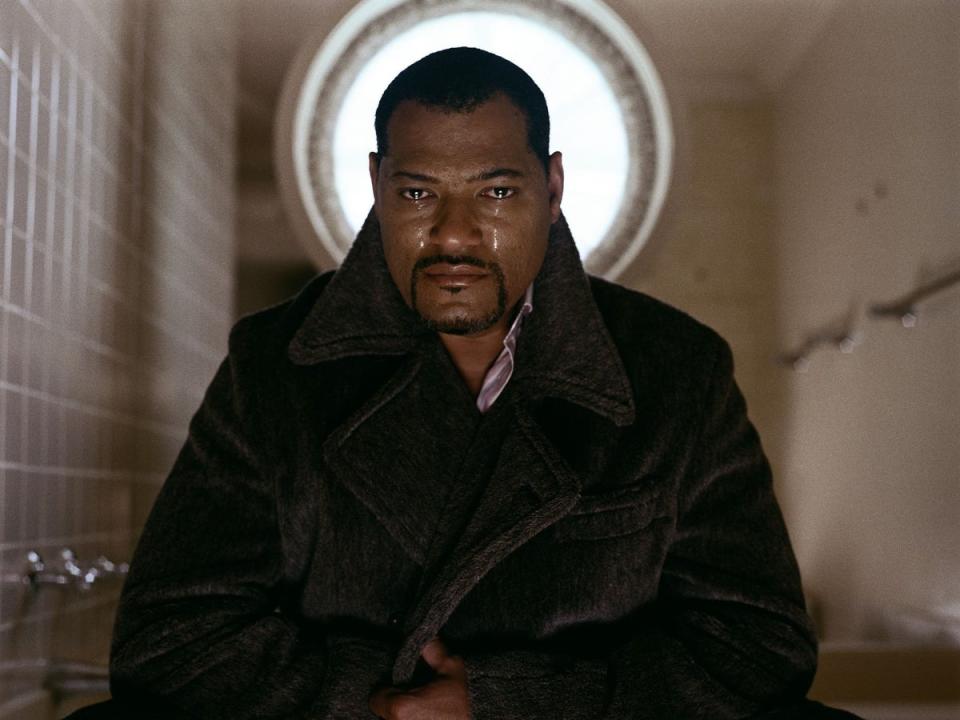Fragile Beauty at the V&A review: a breathtaking exhibition of photography's greatest hits and hidden gems

From the full title of the latest V&A show – Fragile Beauty: Photographs from the Sir Elton John and David Furnish Collection – the casual visitor might expect behind the scenes shots of the great performer’s biggest gigs or perhaps intimate family portraits.
Instead, this is not about them as subjects. It’s an invitation into one of their passions, collecting the work of some of the greatest photographers in history, and for even the mildly photo-curious it is a breathtaking experience.
In 2016, Tate Modern staged an exhibition called The Radical Eye drawn from the pair’s collection, which covered the period of modernist photography from the 1920s to the 1950s. The V&A show picks up where Tate left off.
With 300 works by 140 different artists, its range is quite extraordinary in subjects, styles and themes. From fashion to photojournalism, celebrity to abstraction. John chose the title, a reference to how vulnerability can inspire creativity, and how the camera can capture those moments in time.

This show goes from the start of their collecting in the Nineties – when John bought fashion studies by Horst P Horst, Irving Penn and Herb Ritts – all the way to the most recent purchase: Richard Avedon’s portrait of a California beekeeper which opens the show.
Humanity runs throughout and the curators have done a superb job translating a very personal collection – one that in total numbers 7,000 images – into a gallery space for the public.
Massive names leap from every wall: Cindy Sherman and Robert Mapplethorpe to Sam Taylor-Johnson, William Eggleston and Diane Arbus. But there are so many less well known gems to discover here too.
To impose shape on the show, the curators have split it into nine sections, each theme given its own colour palette on the walls. It starts with the glitz, going from fashion to stars of stage and screen. The biggest photographers taking the biggest names from Frank Sinatra to The Beatles.
Throughout the curators are by turns playful and camp – hello Miss Piggy – and by turns serious and deeply intimate, often showing private pain – whether the heartbreaking images of Marilyn Monroe or the anguished look of an ageing Chet Baker.

The Desire section is a case in point, running from the sublime – Tamotsu Yato’s delicate portrayal of a samurai bodybuilder’s arm – to the ridiculous with Tyres by Herb Ritts, that ripped bloke lugging tyres that could be found in most Athenas in the Eighties.
Photography’s power to shock is evident in the reportage section which runs from images of assassination and protest to war and activism. Multiple images here from the student protestor shot dead to the falling man on 9/11 will bring viewers up short.
The centre of it all is the section that gives the exhibition its title, Fragile Beauty was chosen by John as a reference to how vulnerability can inspire creativity, and how the camera can capture those extraordinary moments in time. The show is, in part, dedicated to Robert Mapplethorpe and Nan Goldin, who escaped suburbia and documented New York’s subcultures, two photographers of immense significance to John and Furnish.

Within the room is a white structure, a shrine, to the work of Goldin, with 149 prints spanning a quarter of a century. It is simply stunning. These are deeply personal snapshots of a generation and a culture. All of human life is here: joy, sex, despair, abuse, death, friendship. It’s totally absorbing, it’s totally shocking and feels totally real. It’s hard to leave.
There is more, so much more, constantly delighting, shocking, leaving the viewer gasping. I left desperate to see more of Robert Frank and Ryan McGinley and was knocked back by the life-sized shot of the Tokyo tube train by Hiro from 1962, by Zanele Muholi, Taylor-Johnson’s Crying Men. So, so much.
It is an unparalleled look at the recent history of photography told through one extraordinary collection. It’s a vast exhibition and a deeply rewarding one, from greatest hits to hidden gems, it does what great shows do – effortlessly broadens the viewer’s horizons, and still leaves them wanting more
V&A, to January 5; vam.ac.uk


